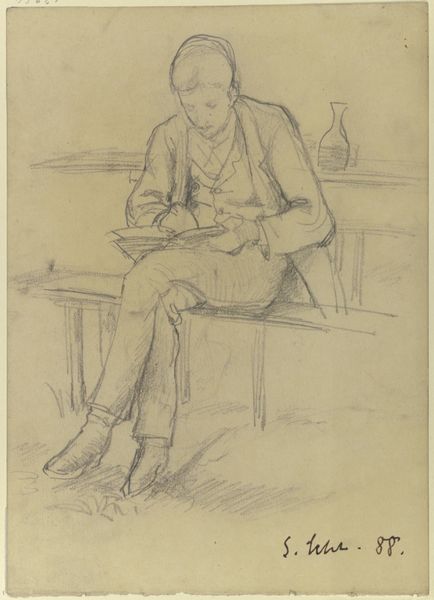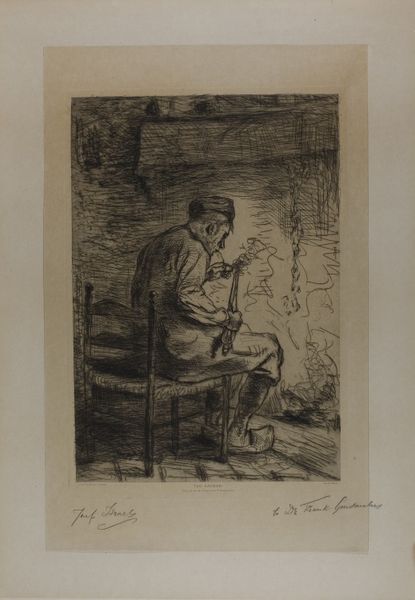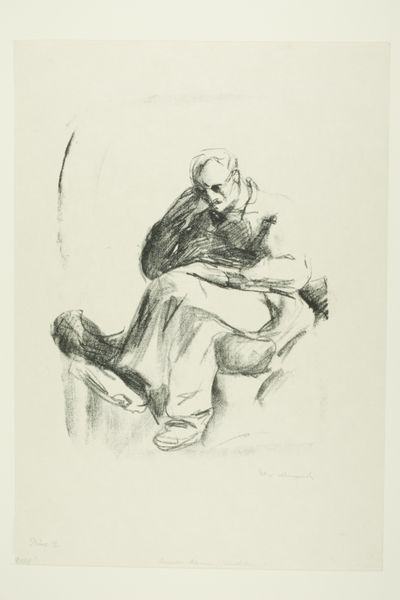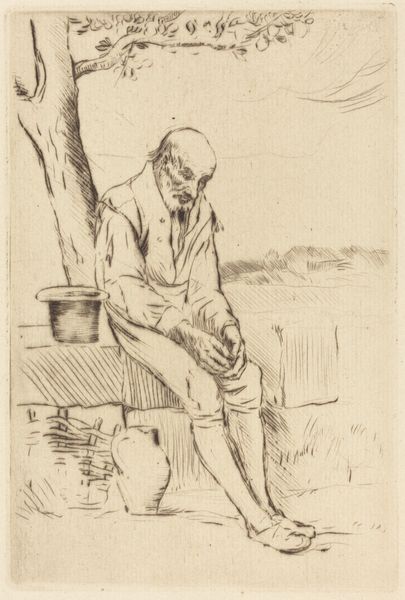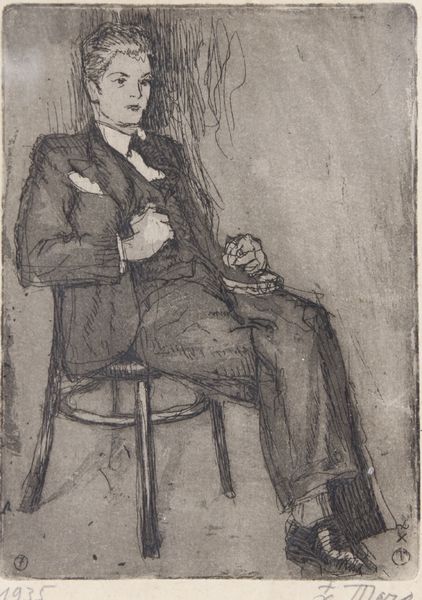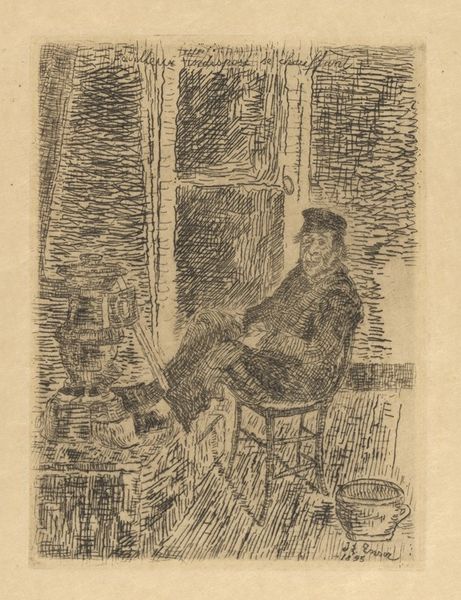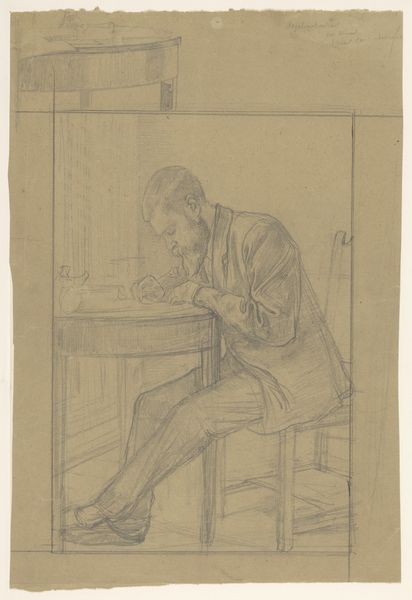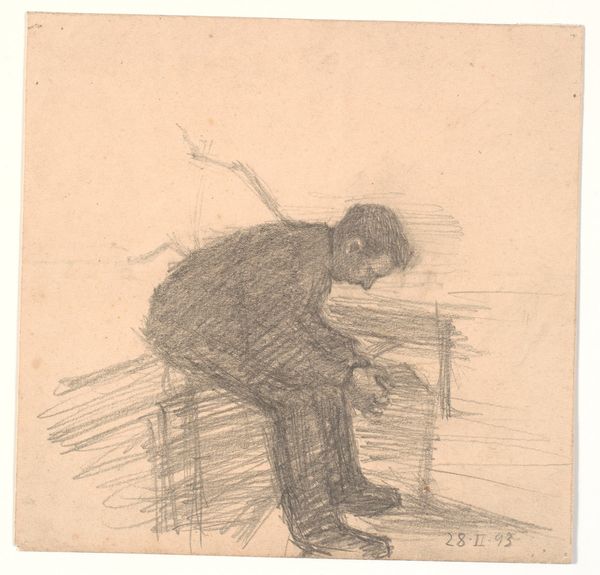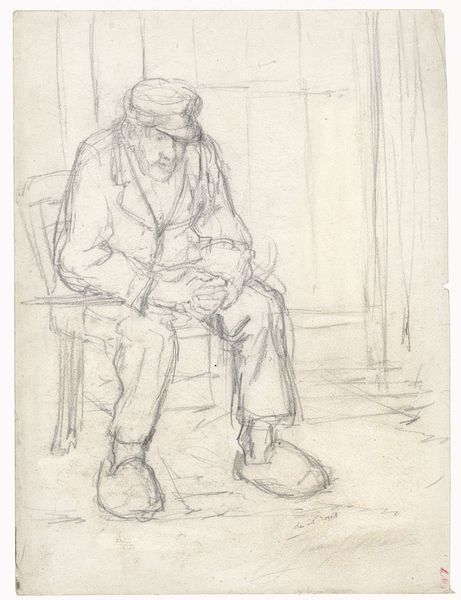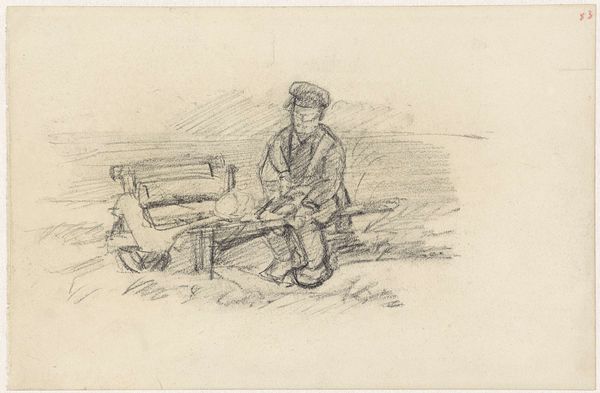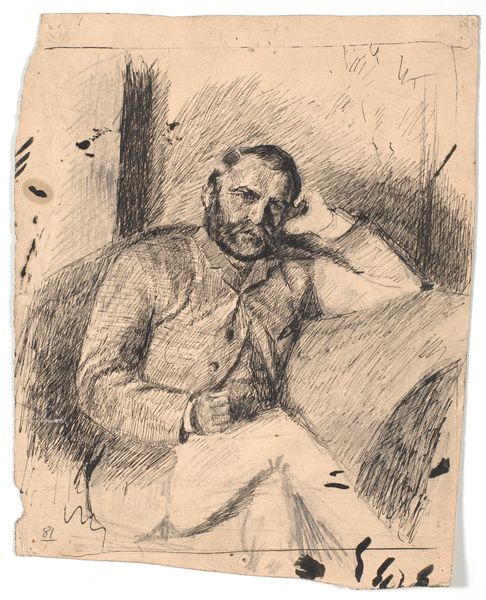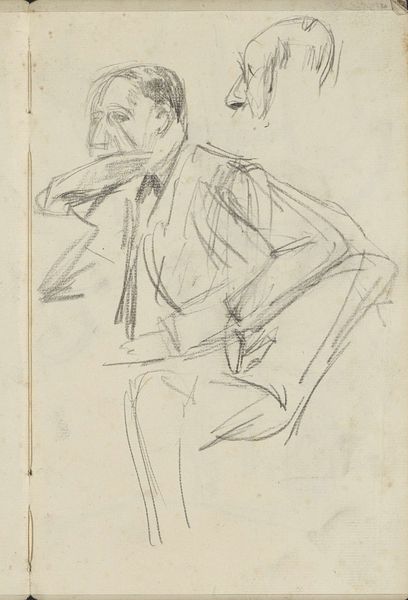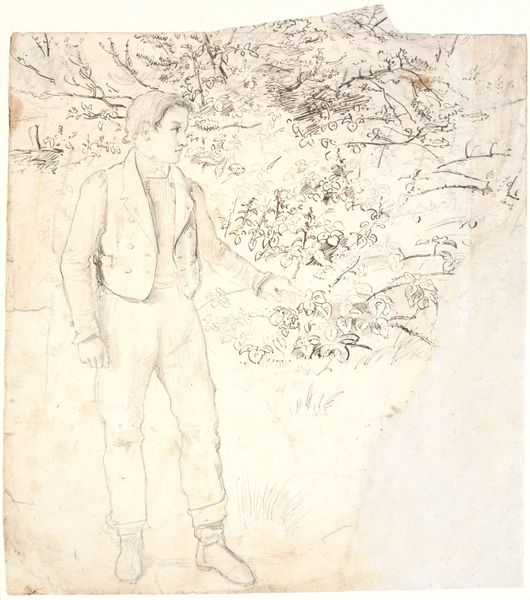
Portret van Johan de Meester, een boek lezend in een tuin Possibly 1879
0:00
0:00
drawing, pencil
#
portrait
#
drawing
#
imaginative character sketch
#
light pencil work
#
quirky sketch
#
impressionism
#
pencil sketch
#
personal sketchbook
#
idea generation sketch
#
pen-ink sketch
#
pencil
#
sketchbook drawing
#
genre-painting
#
sketchbook art
#
fantasy sketch
#
realism
Dimensions: height 313 mm, width 221 mm
Copyright: Rijks Museum: Open Domain
Editor: This drawing, "Portret van Johan de Meester, een boek lezend in een tuin," possibly from 1879, is by Anthon Gerhard Alexander van Rappard. It’s a pencil drawing and gives me a feeling of quiet contemplation, almost a secret moment captured. What do you see in this piece? Curator: It speaks to me of privilege and the performance of intellect. Look at Johan de Meester – presumably a man of some standing to be the subject of a portrait, even an informal one. He's in a garden, but reading, not engaging with nature in a physical way. He's consuming knowledge, further entrenching his intellectual capital. Do you notice how he’s positioned slightly above us? Editor: That's interesting, I hadn’t really considered the power dynamics at play. I was focused on the sort of peacefulness of reading outside. Curator: Peacefulness can be a facade, masking a deeper system of inequality. Consider who *didn’t* have the luxury to sit and read in a garden in 1879. This image then becomes a document of social stratification, a quiet testament to the access that intellectual elites enjoyed while others were denied even basic literacy. How might viewing art like this challenge our own biases? Editor: So you’re saying that even a seemingly innocent portrait like this can reveal something about the power structures of the time. It makes me think about who gets represented in art and whose stories are told. Curator: Exactly! By questioning these seemingly innocuous representations, we can unearth deeper understandings about social hierarchies and biases that persist even today. Editor: I never thought I'd look at a simple drawing of a man reading and think about inequality! It shows how important context is when interpreting art. Curator: Indeed! Hopefully it inspired a new way of viewing these works.
Comments
No comments
Be the first to comment and join the conversation on the ultimate creative platform.
